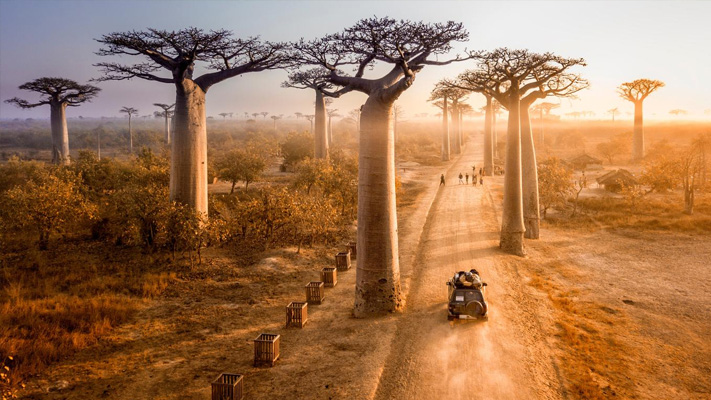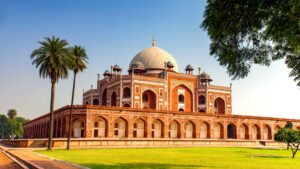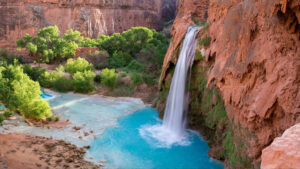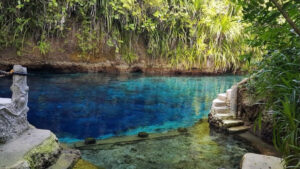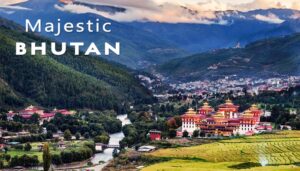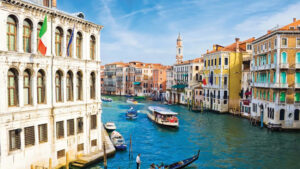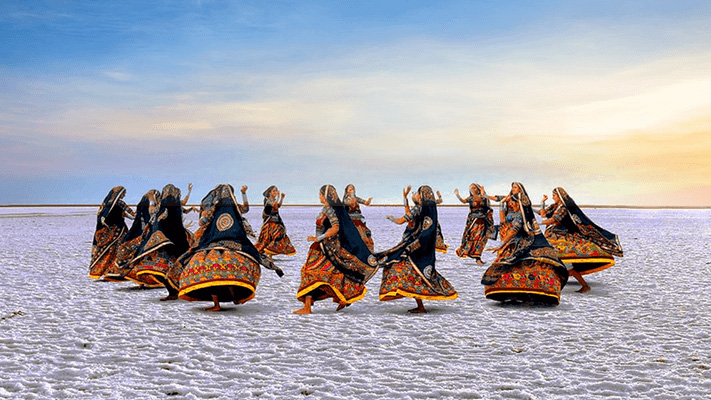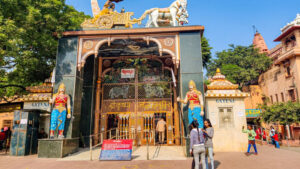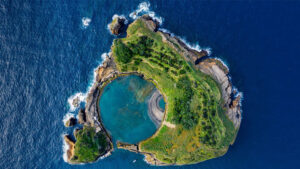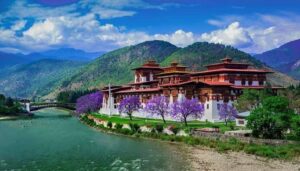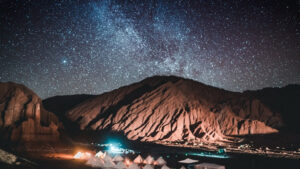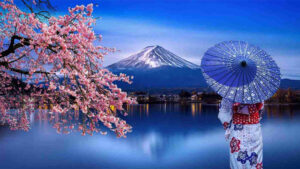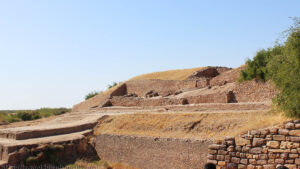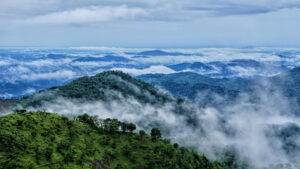MADAGASCAR – A WORLD OF BIODIVERSITY AND BREATH-TAKING LANDSCAPES

Prepare to be astonished by the captivating destination of Madagascar, a land like no other. Nestled off the eastern coast of Africa in the Indian Ocean, this vast island country is a treasure trove of natural wonders and awe-inspiring experiences. From the enchanting biodiversity that exists nowhere else on the planet to the stunning landscapes that encompass rainforests, mountains, and pristine beaches, Madagascar is a place that astonishes at every turn. Explore its unique ecosystems, encounter charismatic lemurs, immerse yourself in the vibrant culture of the Malagasy people, and discover the untamed beauty that has earned Madagascar its well-deserved reputation as a destination that leaves visitors spellbound.

Overview
- Biodiversity: Madagascar is renowned for its exceptional biodiversity. It is home to a wide array of unique plant and animal species, many of which are found nowhere else on Earth. Lemurs, a type of primate, are one of the most iconic and diverse groups of animals found in Madagascar.
- Geography: The island of Madagascar is the fourth largest in the world, covering an area of approximately 587,041 square kilometers (226,658 square miles). It is characterized by diverse landscapes that include rainforests, dry deciduous forests, highland plateaus, mountains, and coastal plains.
- Culture and People: The Malagasy people make up the majority of the population in Madagascar. The culture of Madagascar is a blend of African, Asian, and European influences. The island’s rich cultural heritage is reflected in its traditional music, dance, handicrafts, and unique Malagasy cuisine.
- National Parks and Reserves: Madagascar is famous for its national parks and nature reserves, which protect the country’s exceptional biodiversity. Parks such as Ranomafana, Andasibe-Mantadia, and Isalo offer opportunities to explore rainforests, spot lemurs, and discover diverse plant and animal species.
- Baobab Alley: Located in western Madagascar, Baobab Alley is a famous tourist attraction known for its avenue of towering baobab trees. The unique landscape and the striking silhouettes of these ancient trees make it a popular spot for photography and exploration.
- Beaches and Marine Life: Madagascar boasts stunning beaches along its coastline, offering opportunities for relaxation, snorkeling, and diving. The surrounding waters are home to coral reefs, colorful marine life, and unique underwater ecosystems, making it a paradise for nature enthusiasts.
- Adventure and Outdoor Activities: Madagascar offers a range of adventure activities, including hiking, trekking, wildlife safaris, and exploring remote and untouched regions. Visitors can embark on journeys to discover hidden waterfalls, explore limestone caves, and engage in thrilling wildlife encounters.
Madagascar is a captivating destination that offers a blend of natural wonders, unique wildlife, vibrant culture, and adventure. It is a place where visitors can immerse themselves in the island’s natural beauty, explore its diverse ecosystems, and experience the warmth and hospitality of the Malagasy people.
Experiences and Activities Enjoyed by Tourists
Tourists visiting Madagascar can partake in a wide range of experiences and activities that showcase the country’s diverse landscapes, unique wildlife, and rich cultural heritage. Here are some of the top experiences enjoyed by visitors to Madagascar:

- Wildlife Encounters: Madagascar is renowned for its exceptional biodiversity, and one of the highlights of visiting the country is encountering its unique wildlife. From lemurs to chameleons, visitors have the opportunity to observe and photograph these fascinating creatures in their natural habitats.
- National Park Exploration: Madagascar boasts numerous national parks and nature reserves that offer opportunities for hiking, wildlife spotting, and immersive nature experiences. Parks such as Andasibe-Mantadia, Ranomafana, and Isalo provide a chance to discover lush rainforests, rare plant species, and endemic animals.
- Beaches and Marine Activities: The coastal regions of Madagascar are adorned with pristine beaches, turquoise waters, and vibrant coral reefs. Visitors can relax on the white sand beaches, go snorkeling or diving to explore the rich marine life, or even embark on a sailing adventure along the picturesque coastline.
- Cultural Immersion: Immerse yourself in the vibrant culture of the Malagasy people by visiting local villages and engaging in cultural activities. Experience traditional music, dance performances, and sample authentic Malagasy cuisine, such as the flavorful rice dishes and unique tropical fruits.
- Trekking and Adventure: Madagascar offers exciting trekking opportunities for adventure enthusiasts. From hiking through the otherworldly landscapes of the Tsingy de Bemaraha to climbing the challenging peaks of the Andringitra Massif, there are options for all levels of adventurers.
- Nature Photography: With its stunning landscapes, incredible biodiversity, and unique flora and fauna, Madagascar is a paradise for nature photographers. Capture the dramatic sunsets, capture the vibrant colors of chameleons, and document the breathtaking beauty of the island’s natural wonders.
- Cultural Heritage Sites: Explore the historical and cultural heritage of Madagascar by visiting ancient sites and landmarks. The royal palace complex of Ambohimanga, the fascinating tombs of the Merina kings in Antananarivo, and the UNESCO World Heritage site of the Royal Hill of Ambohimanga provide insights into the country’s rich history.
Top Attractions and Must Visit Places
In addition to the incredible experiences within Madagascar itself, there are also several must-visit places near the country that offer unique attractions. Here are some top attractions and must-visit places near Madagascar:

- Nosy Be, Madagascar: Located off the northwest coast of Madagascar, Nosy Be is a popular island destination known for its stunning beaches, turquoise waters, and vibrant marine life. Visitors can indulge in snorkeling, diving, or simply relax on the pristine beaches while enjoying the laid-back island atmosphere.
- Comoros Islands: Situated to the northwest of Madagascar, the Comoros Islands offer a glimpse into the untouched beauty of the Indian Ocean. With its volcanic landscapes, lush forests, and idyllic beaches, the islands provide opportunities for hiking, exploring local culture, and immersing in the natural wonders of the archipelago.
- Mauritius: Located east of Madagascar, Mauritius is a tropical paradise renowned for its picturesque beaches, crystal-clear waters, and luxury resorts. Visitors can enjoy water sports, explore nature reserves, indulge in delicious cuisine, and experience the vibrant mix of cultures on the island.
- Réunion Island: Positioned to the east of Madagascar, Réunion Island is a French overseas department known for its dramatic landscapes. The island features towering volcanic peaks, lush forests, beautiful waterfalls, and hiking trails that lead to breathtaking viewpoints, making it a paradise for outdoor enthusiasts.
- Mayotte: Mayotte is another French overseas department situated to the northeast of Madagascar. This archipelago offers visitors the opportunity to explore pristine coral reefs, go snorkeling or diving, and discover the unique blend of African, French, and Malagasy cultures.
- Mozambique: Located to the west of Madagascar, Mozambique is a neighboring country with a diverse range of attractions. From stunning beaches along the Indian Ocean coast to historic sites like Ilha de Mozambique and Gorongosa National Park’s wildlife-rich landscapes, Mozambique offers a unique blend of culture, nature, and adventure.
- Seychelles: Positioned northeast of Madagascar, the Seychelles is an archipelago renowned for its pristine white-sand beaches, turquoise waters, and abundant marine life. Visitors can explore nature reserves, go island hopping, snorkel or dive among vibrant coral reefs, and relax in luxurious resorts.
Best Time to Visit
The best time to visit Madagascar largely depends on the specific activities and regions you plan to explore, as the country experiences varying weather patterns throughout the year. Generally, the ideal time to visit Madagascar is during the dry and cooler months, which offer comfortable temperatures and better wildlife viewing opportunities. Here are two distinct seasons to consider:

- Dry Season (April to October): This period, which coincides with the Southern Hemisphere winter, is generally considered the best time to visit Madagascar. The weather is dry and cooler, with less rainfall and lower humidity. It is an excellent time for wildlife spotting, as animals gather around water sources. The popular parks and reserves are accessible, and the landscapes are lush and green. However, it’s worth noting that July and August are the peak tourist months, so popular attractions may be busier.
- Shoulder Season (November to March): This period falls during the summer months in Madagascar and is characterized by higher temperatures and increased rainfall. However, the northern parts of the country, such as Nosy Be and Antsiranana, experience a drier season during this time. The vegetation is at its most vibrant, and it’s a great time for birdwatching and exploring the coastal areas. It’s worth noting that cyclones can occur during the summer months, especially from January to March, so it’s important to stay updated on weather forecasts if you plan to visit during this time.


